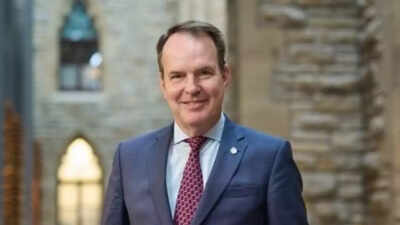‘Strong and focused agenda’: Throne speech adopted without recorded vote in Canada’s House of Commons. Here’s what we know

The Canadian government adopted the throne speech without a recorded vote, using the “on division” method, which means it does not need a vote in the Senate. The House of Commons on Wednesday adopted the government’s reply to the throne speech, according to CBC News. Steven MacKinnon, leader of the government in the House of Commons, posted on social media that this adoption paves the way for a “strong and focused agenda.” He stated, “We have a clear mandate to deliver on priorities for Canadians and build a strong Canada — and we’re going to do just that.”No MP asked for recorded division on the throne speech when the time to vote came, meaning it was passed without MPs standing to vote.The adoption came despite interim NDP Leader Don Davies announced his party’s opposition to the throne speech. Following a caucus meeting, he noted that 1.2 million Canadians elected New Democrats to represent working families, but these priorities were absent from the speech. He criticised the lack of specific details regarding healthcare and housing plans.MacKinnon confirmed this was a confidence vote, marking the first significant test for Prime Minister Mark Carney’s government. A lost confidence vote could trigger an early election. Davies acknowledged public reluctance towards an election but maintained his party’s position on principle.Green Party Leader Elizabeth May supported the speech, agreeing with its main theme of strengthening Canada, while noting limited attention to climate change. The Conservatives remained uncommitted on their voting stance.The Liberals experienced a setback on Monday when opposition members successfully amended the reply, requiring an economic update before summer recess. Government whip Mark Gerretsen downplayed the 166-164 defeat.The speech emphasises economic growth through expedited national projects and accelerated housing construction. Opposition leaders criticise its vagueness and reliance on rhetoric without clear spending reduction plans.
What is throne speech?
A throne speech traditionally represents a matter of confidence, and its failure could have led to the government’s defeat, potentially resulting in a fresh election or the governor general permitting an alternative party to establish governance.The Liberal party, with their 169 seats in the House of Commons, operates three seats below majority government status and requires a minimum of three opposition members to support their legislative proposals and other initiatives for successful passage.
Who gave throne speech?
King Charles III delivered the Speech from the Throne to open the 45th session of Canada’s parliament in Ottawa. In May, Prime Minister Mark Carney announced that he had extended an invitation to the King to officially inaugurate Canada’s 45th parliamentary session.The timing of his invitation was considered tactical, occurring during a period of tense diplomatic relations between Canada and its influential neighbour, the United States.During his address in Ottawa, Carney emphasised that the King’s presence “clearly underscores the sovereignty of our country”. He stated to the press: “This is a historic honour that matches the weight of our times.”







